unstandardised time

An augmented reality interface for the scheduling tool of the future.
Unstandardised Time is the first compelling use of Augmented Reality technology, and allows people to understand, empathise and synchronise with the active times of other people or groups around the world.
Time is a social construct; it is both real and virtual, driven both by our perception of it passing as well as the technology used to measure and display it. Unstandardised Time is an exploration of the representation of time in modern society and proposes a new system where people’s active time is mapped around their social commitments, professional commitments, and desired lifestyles instead of their geographical location and societal norms, using augmented reality to tune the environment and aid the transition to the desired active time.
Final Project, Innovation Design Engineering MA/MSc Programme at Royal College of Art and Imperial College London. Full project report can be found here.
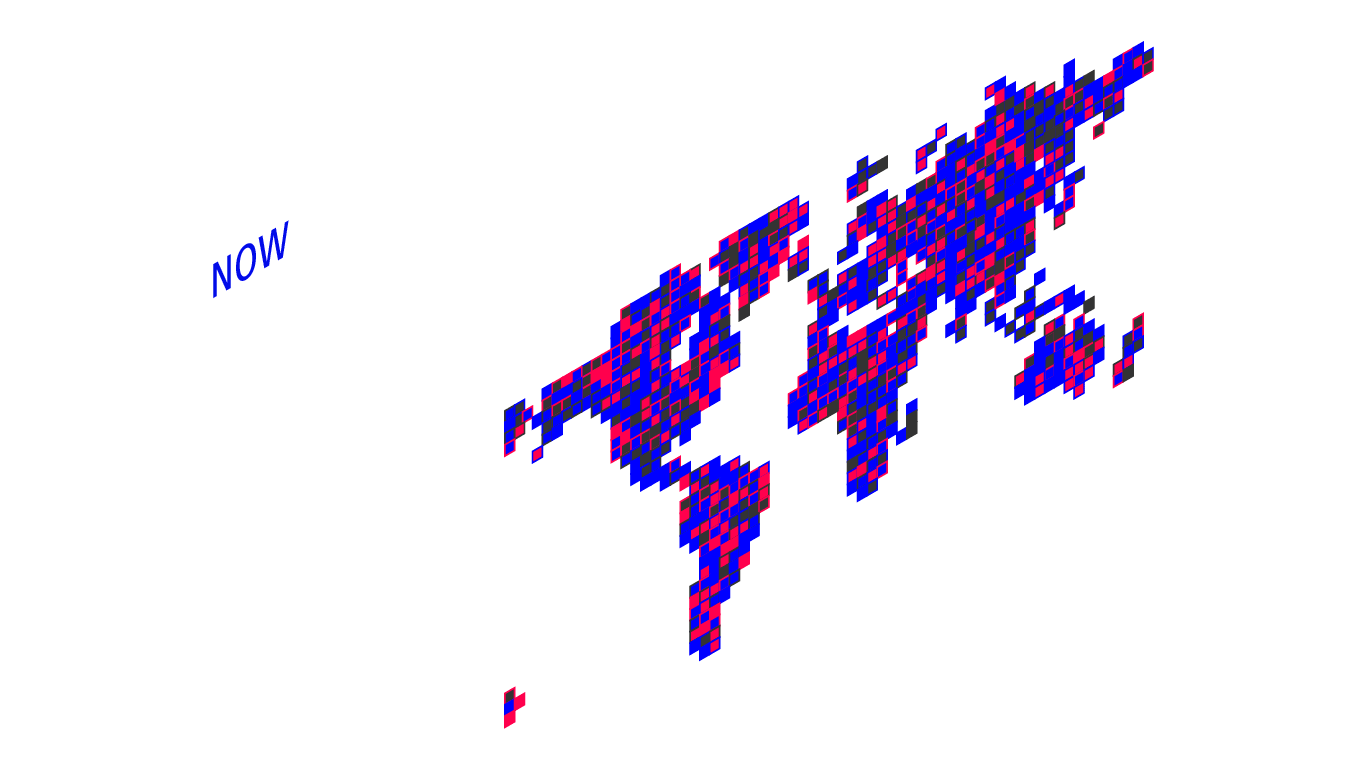
We are living in an outdated time system, using prescriptive international time zones developed for train timetabling in the 19th Century. In an increasingly globalised world with an increasingly freelance and nomadic workforce, there is a need to rethink the current standardised time system in order to provide a more effective solution for international communication and collaboration for the modern day, and a more accommodating system for people to develop their own daily schedules, away from the standardised ‘9-to-5'.
The system created is based in the near-future context in which Augmented Reality is as pervasive as smartphones are today, allowing people's environments and time cues to be tuned specifically for them. Through the ability to create and communicate personal time zones, and the development of new interactions such as intuitive scheduling and synchronisation between individuals and groups, Unstandardised Time aims to provide people with the agency to remap their time around themselves and other people relevant to them.
Visualisation of scheduling interface and social interaction in an unstandardised time system.
[Music credit: HOMESHAKE]

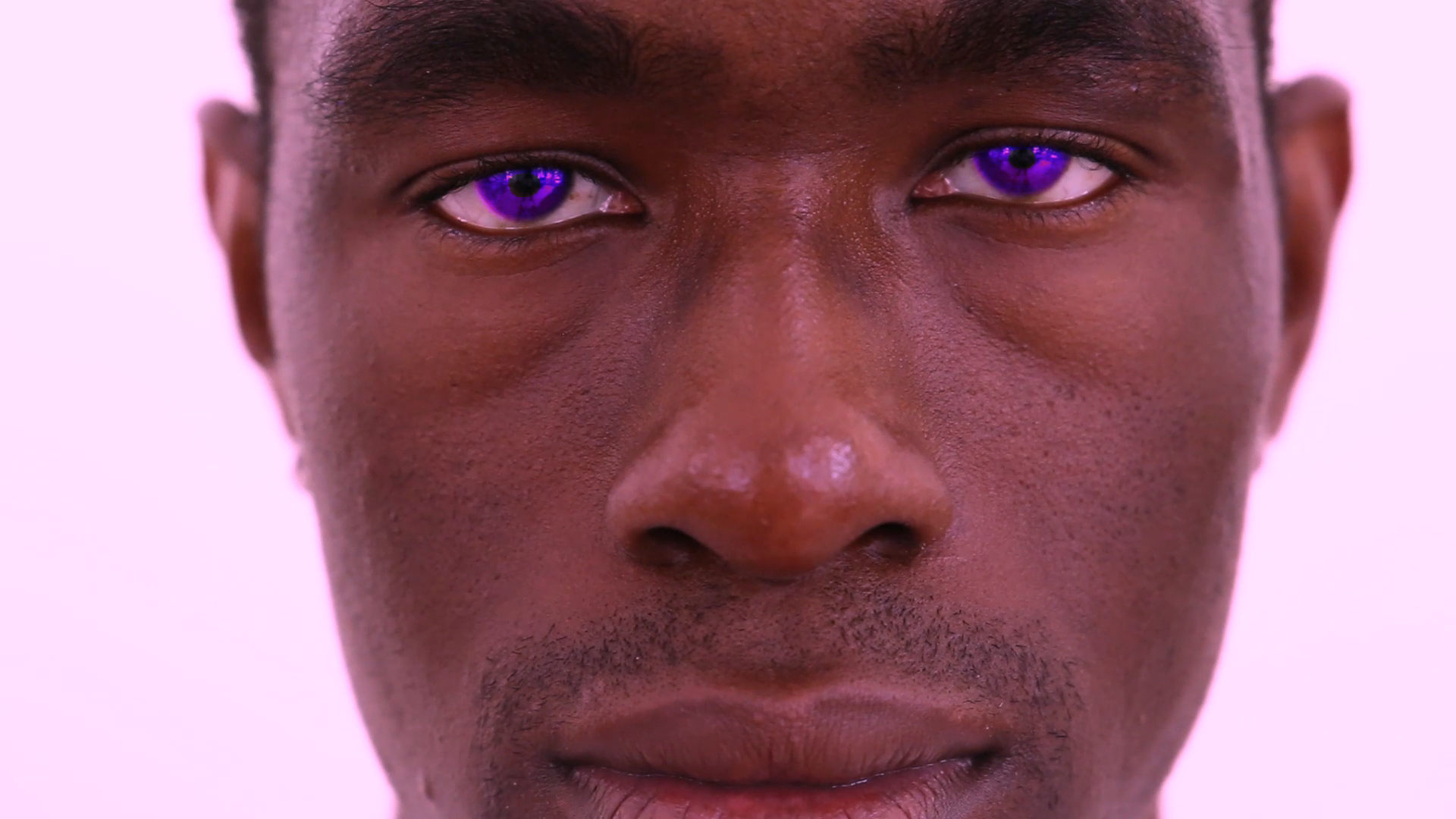

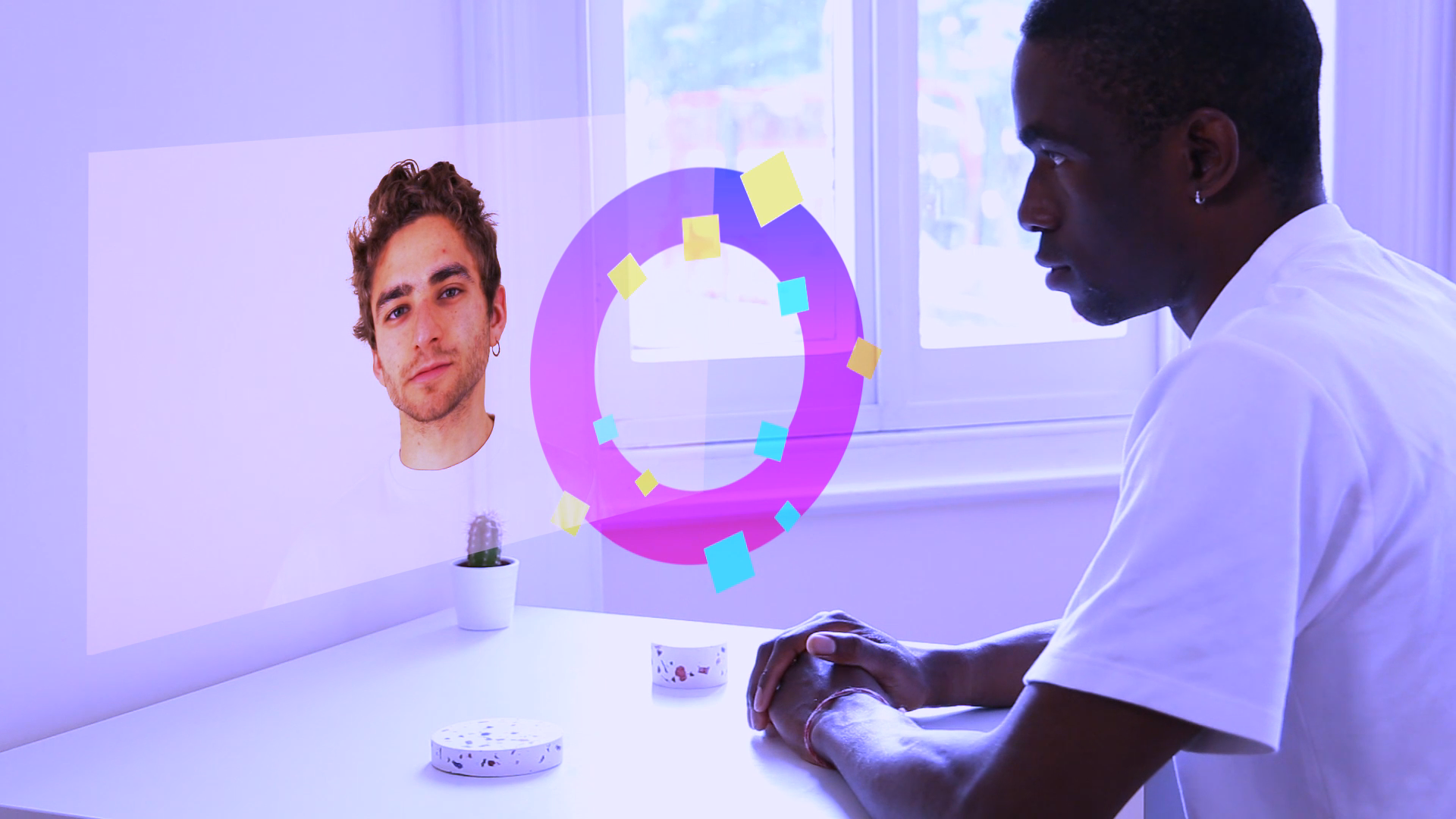



Project Origins
The project started as a critique of virtual and augmented reality content, following an exploration and the mapping of the limits of the different types of reality in comparison with other types of immersive media such as cinema and literature.

Mapping of different immersive media against axes of realness, immersiveness and interaction; this project aimed to be highly immersive and interactive, but on the unreal side of the spectrum.
My viewpoint in this field is that the content generally being created for platforms of alternate realities are conceptually stuck within the realm of our physical, literal reality. For instance, objects, such as a table in physical reality, are generally just ported as a digital table in the virtual environment; this virtual table is not only uncompelling as a replacement for an actual table, but it also misses the opportunity to create a completely different type of virtual object suited for that purpose - why would a virtual table need legs or wood-grain panels?
My aim in this project was to develop a new anti-skeuomorphic interface specifically for unreal, virtual, objects and environments. I wanted to move away from the notion of using virtual layers of reality to create empathy, because I believe that this concept of virtual reality as an empathy tool is superficial, and puts a disproportionate emphasis on visual immersion as a mechanic behind providing empathy. Instead, I wanted to see what other opportunities living within virtual layers could provide us with.
After some initial experiments and explorations, as detailed in the project report, I settled on time as a context, due to its existence both as a real, physical concept we can perceive to pass, and its social, virtual representation via technology such as sun dials, hour glasses and quartz oscillators.
Project Details
The proposed Augmented Reality system was implemented using a smartphone and Google Cardboard, with the software made in Unity, using the Vuforia plugin, and IBM Watson APIs for the machine learning of voice-activated commands. Voice activation was used as UX testing proved it to be more intuitive than marker-based virtual buttons for the user interface. In this system, three scales of outputs were proposed: desk (using specially-made physical fiducials), body, and environment.
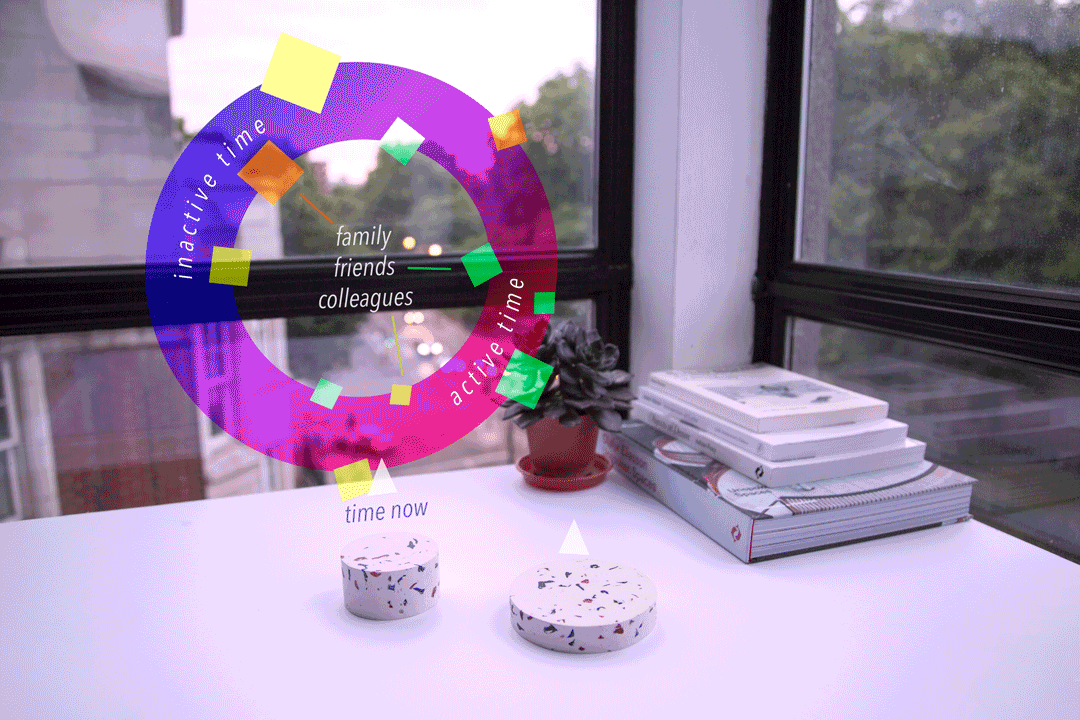
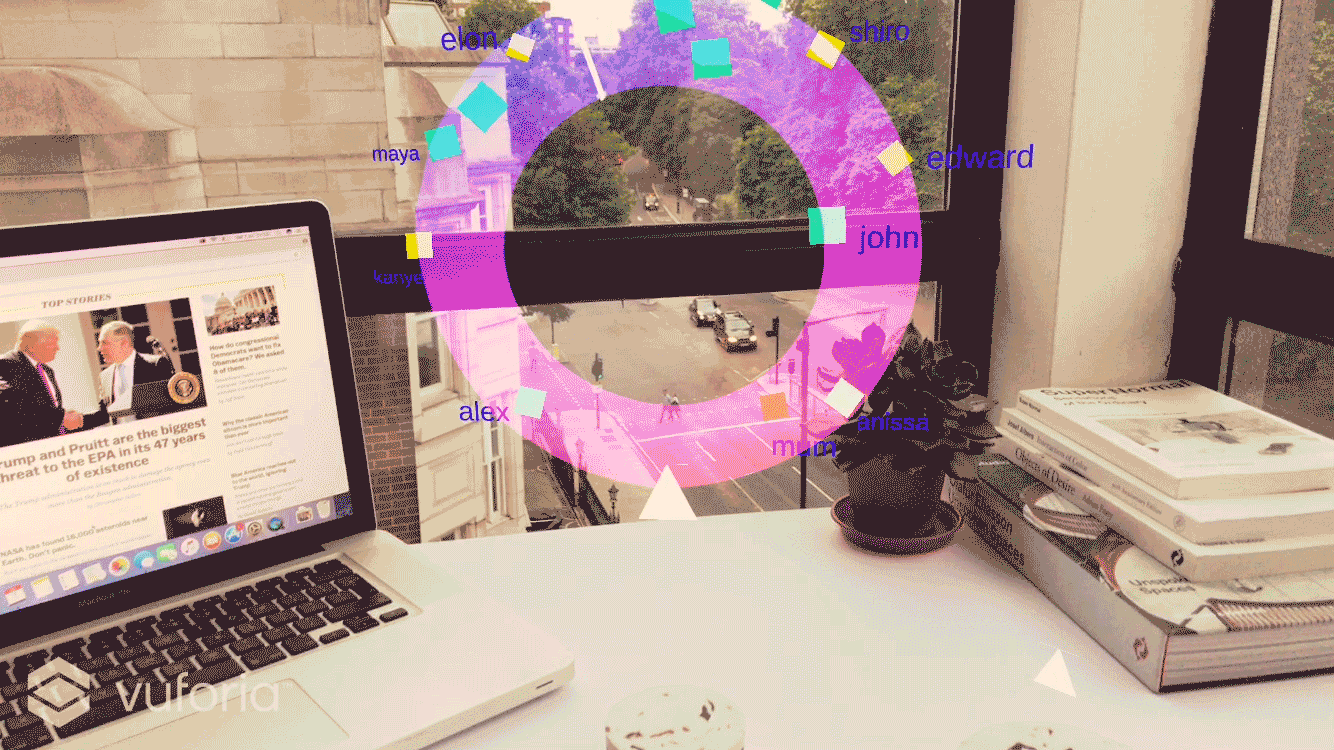
1. The desk-scale outputs are where the scheduling interactions take place. The concept of 9 o’clock, 10 o’clock and so on is replaced with a new non-linear representation of time whereby ‘active time’ is shown in pink, and ‘non-active’ time is shown in blue. By today’s standards, active and non-active could mean day and night respectively, but the system allows for people to define what they mean by active - whether that is approximately when they are awake or when they want to be contacted for work.
The ring represents a 24-hour day cycle, that rotates as the day progresses; contacts, such as family, friends and colleagues, are distributed around this ring depending on what part of their day they are currently in. This allows for a much more intuitive understanding and empathy for somebody else’s active time than current systems allow.
The proposed representation of time moves away from the linear, 9-to-5 type representation of time proposed by mainstream scheduling applications such as Google Calendar - a representation that is very non-conducive for international work, and for those who work alternative hours.
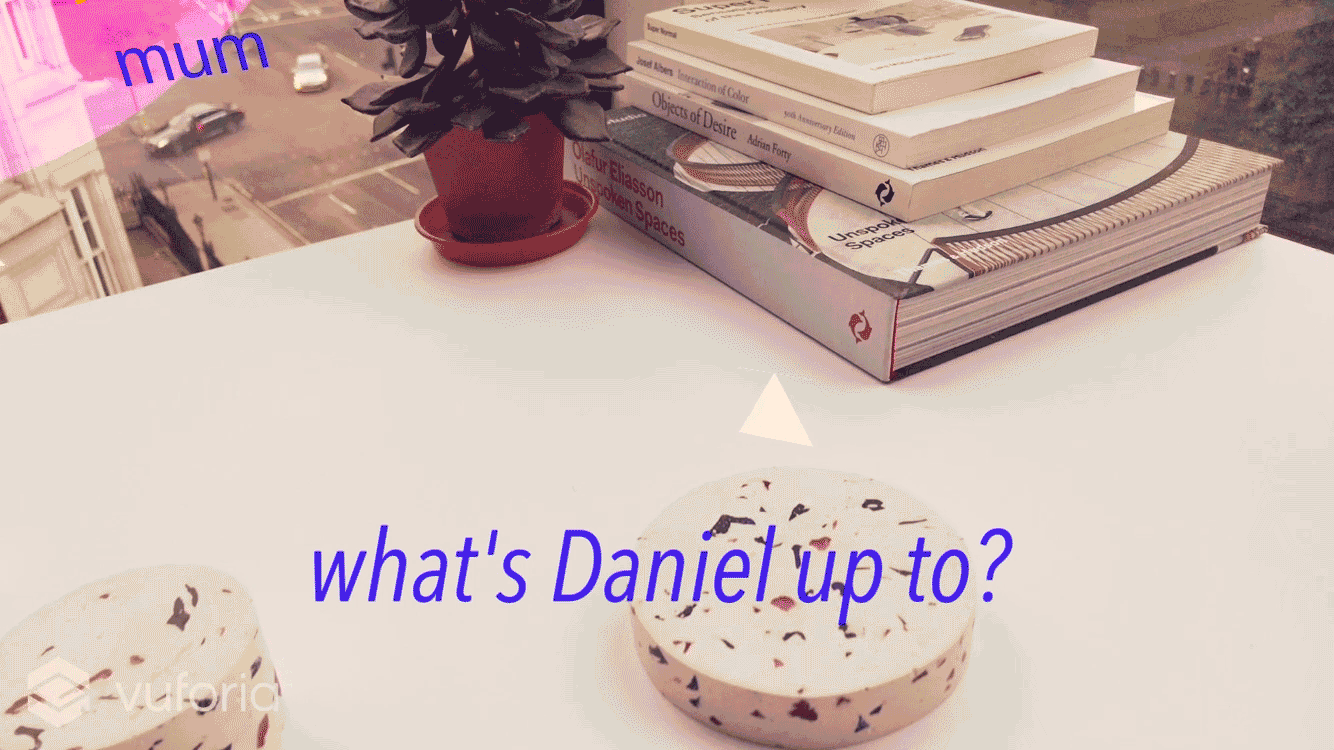
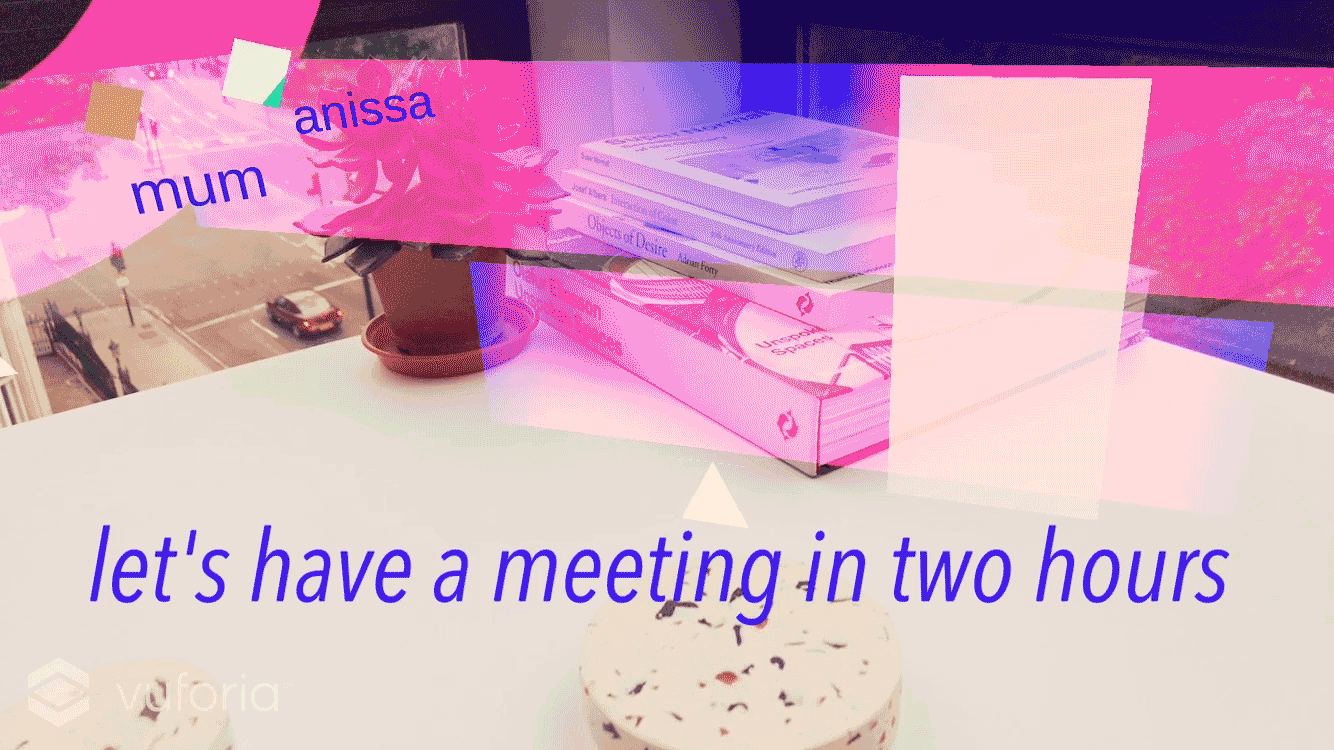
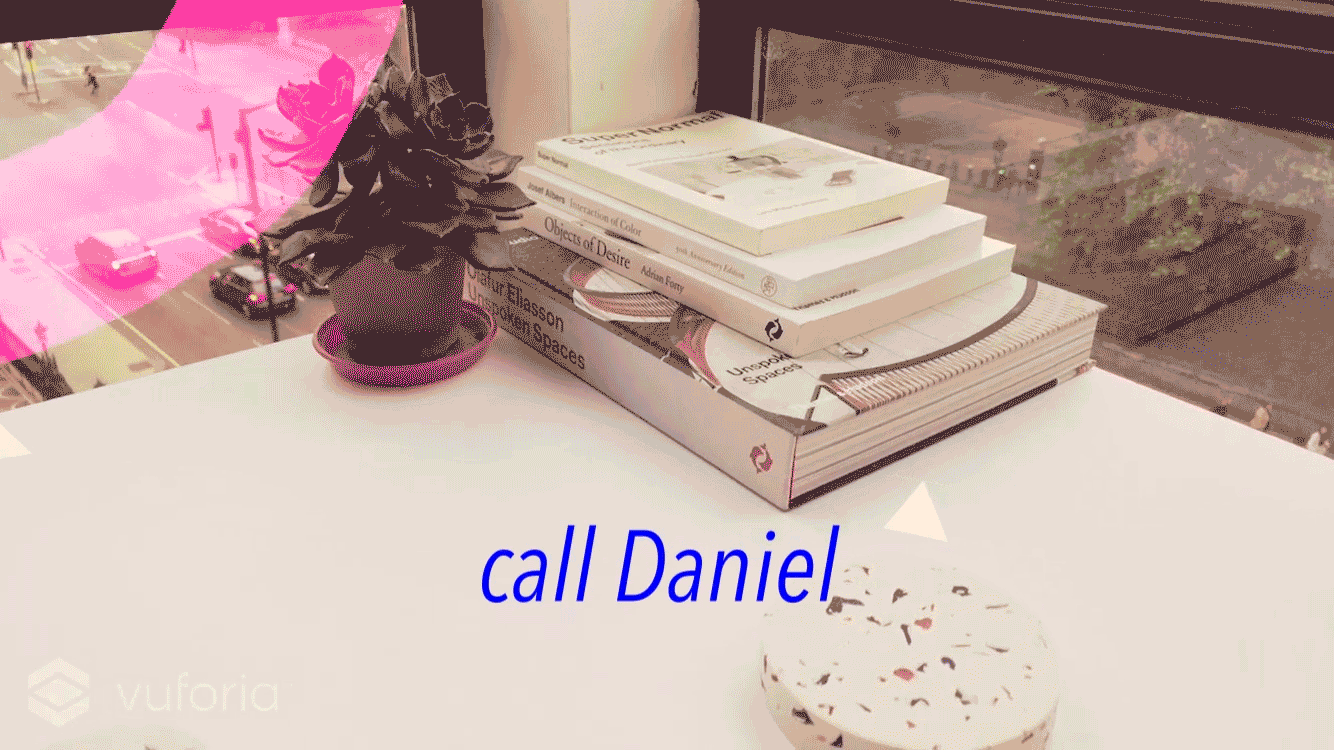

A contact can be selected, using a voice-activated command, for a more detailed view of their time relative to yours, with the overlapping active time highlighted in the interface. This can then be used to schedule a meeting or call at an appropriate time for both parties.
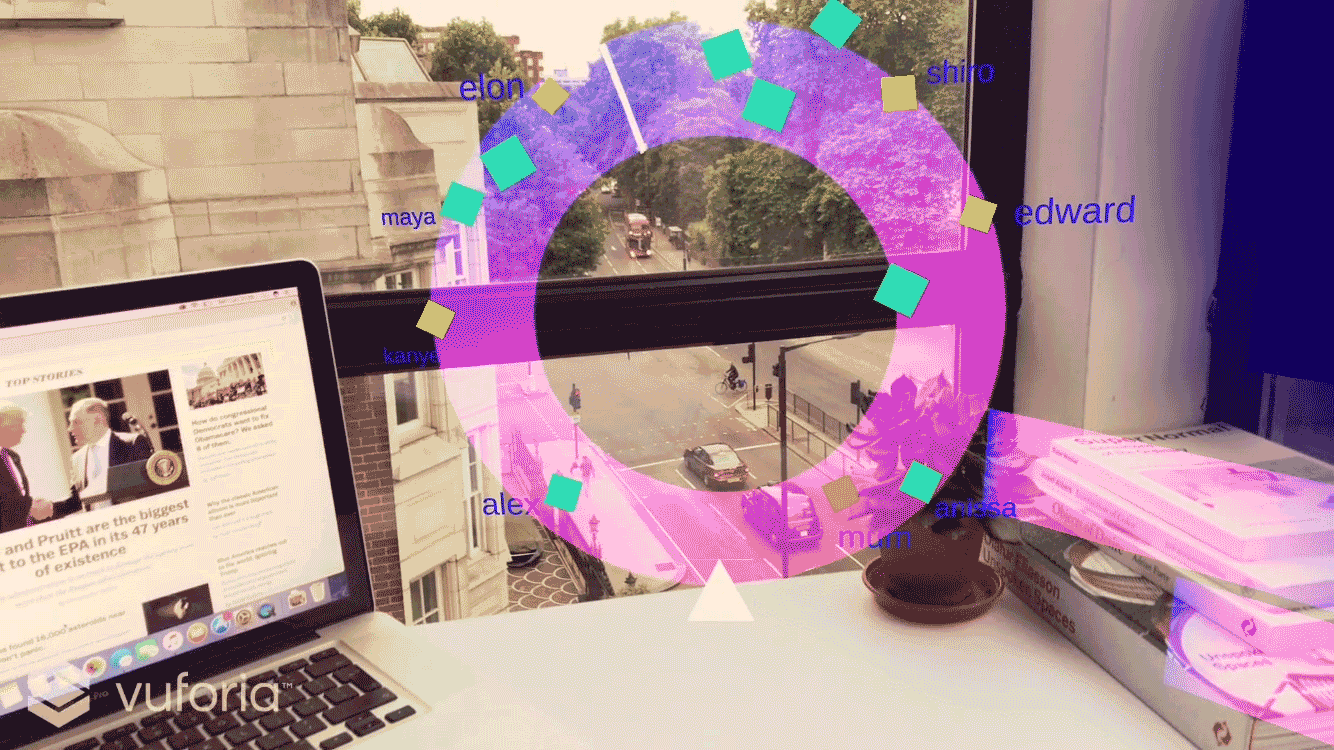
Alternatively, contacts can be selected by filtering - for example by seeing what friends are active and geographically near you right now.
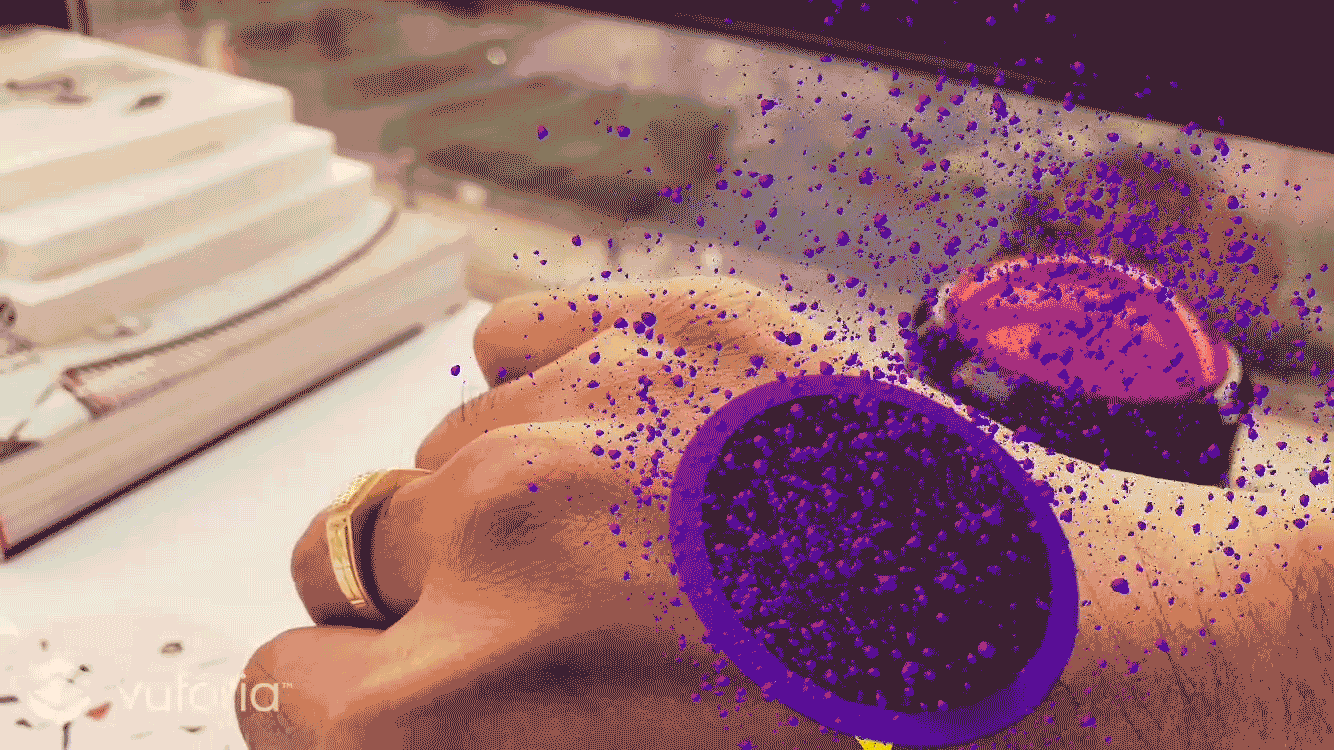
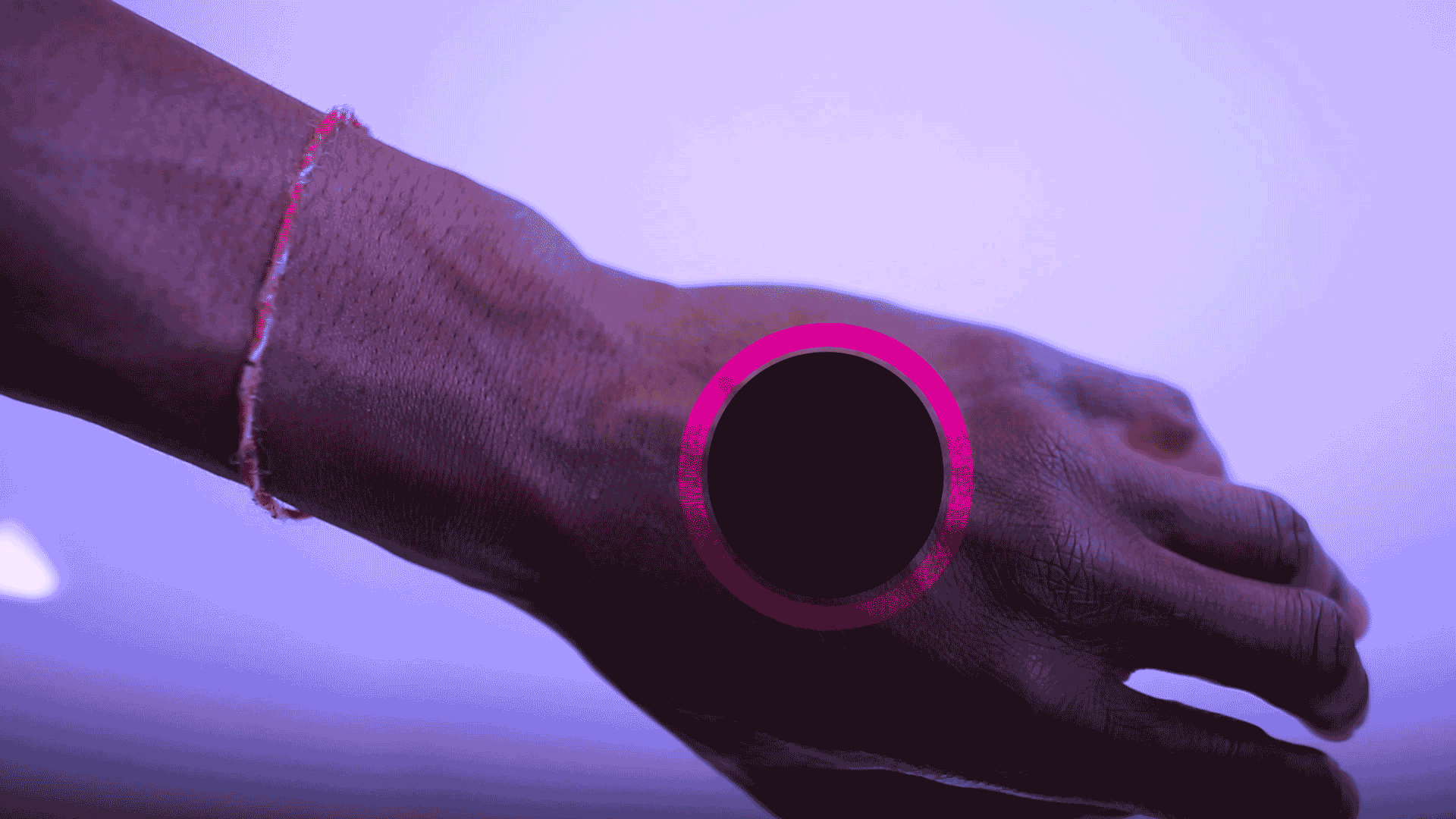
2. The body-scale output has two purposes. The first is a representation of the wearer’s active time at that point, with a solid pink band meaning fully active, transitioning to blue when going inactive. I
n a reality where people in the same geographic location could have different active times, this would communicate the part of the day people are in, both to themselves and to others around them. Its second purpose is to be a platform for notifications from the system, for example for when a meeting is scheduled.

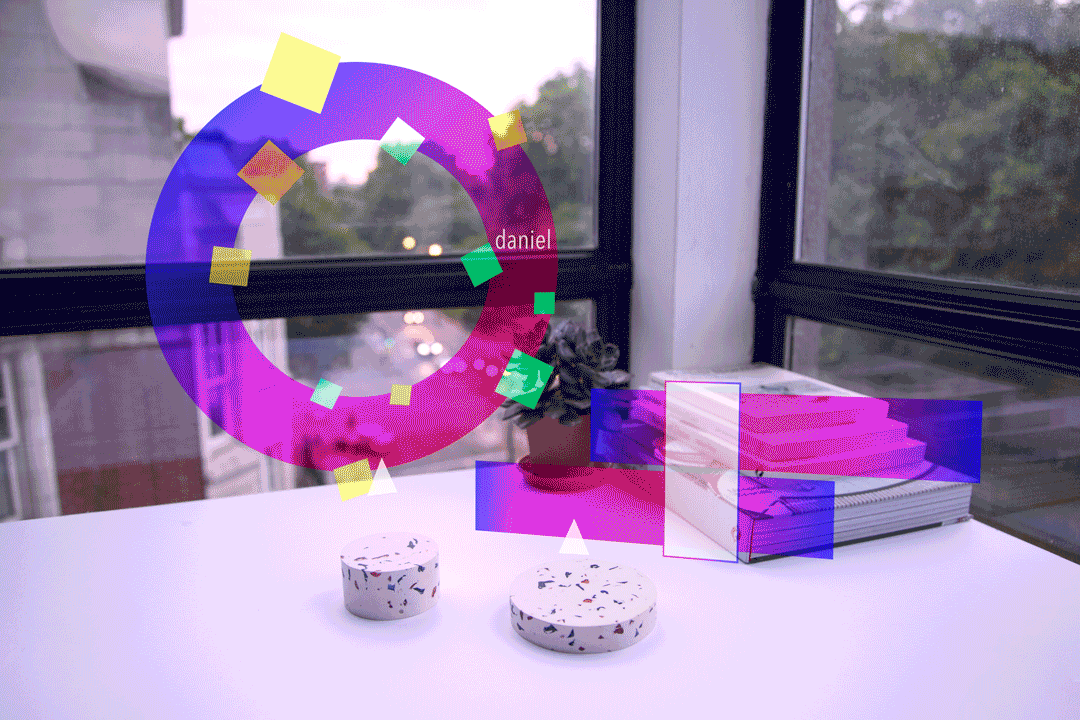
3. The environment-scale output tunes the intensity and wavelength (colour) of light in order to help transition people to a new active time. We are biologically tied to the sun, or more specifically the light from the sun, to determine when we are awake and asleep. The main regulator of the human body clock, or circadian rhythm, is the melatonin hormone produced in the pineal gland; melatonin pills as a result are a very effective way of resetting or shifting circadian rhythms, and are often used in remedies used to counter jet-lag, a condition arising from a sudden change in timezone, but it has also been shown that light exposure affects melatonin response and the human circadian rhythm. Furthermore, it has been shown that the wavelength (colour) of light being exposed to has a large effect on the circadian melatonin rhythm, with shorter wavelength (bluer) light having the greatest effect. As such. blue light-emitting goggles, panels, and other devices are currently used to treat problems such as sleep disorders, jet lag and seasonal affective disorder. [See p. 30 of the project report for citation of sources].
For these reasons, augmented reality seems to be a very appropriate technology to use; acting as a virtual filter between the eyes and the environment, it is able to regulate the intensity and wavelength of light that is being emitted directly to the eyes. This also allows for each individual to experience a specific type of light exposure (and therefore a specific type of environment), allowing for different people’s different active times to function in shared spaces. Finally, augmented reality technology, which utilises a computing element, allows for this type of intervention to continually measure, analyse and update the system over the transition time, thus keeping all contacts up to date about contacts’ active time automatically and invisibly. Creating new active times is not intended to be an isolationist exercise, but rather to connect potentially geographically-separated people more strongly - it is up to the individual to decide which people to balance their active time between.

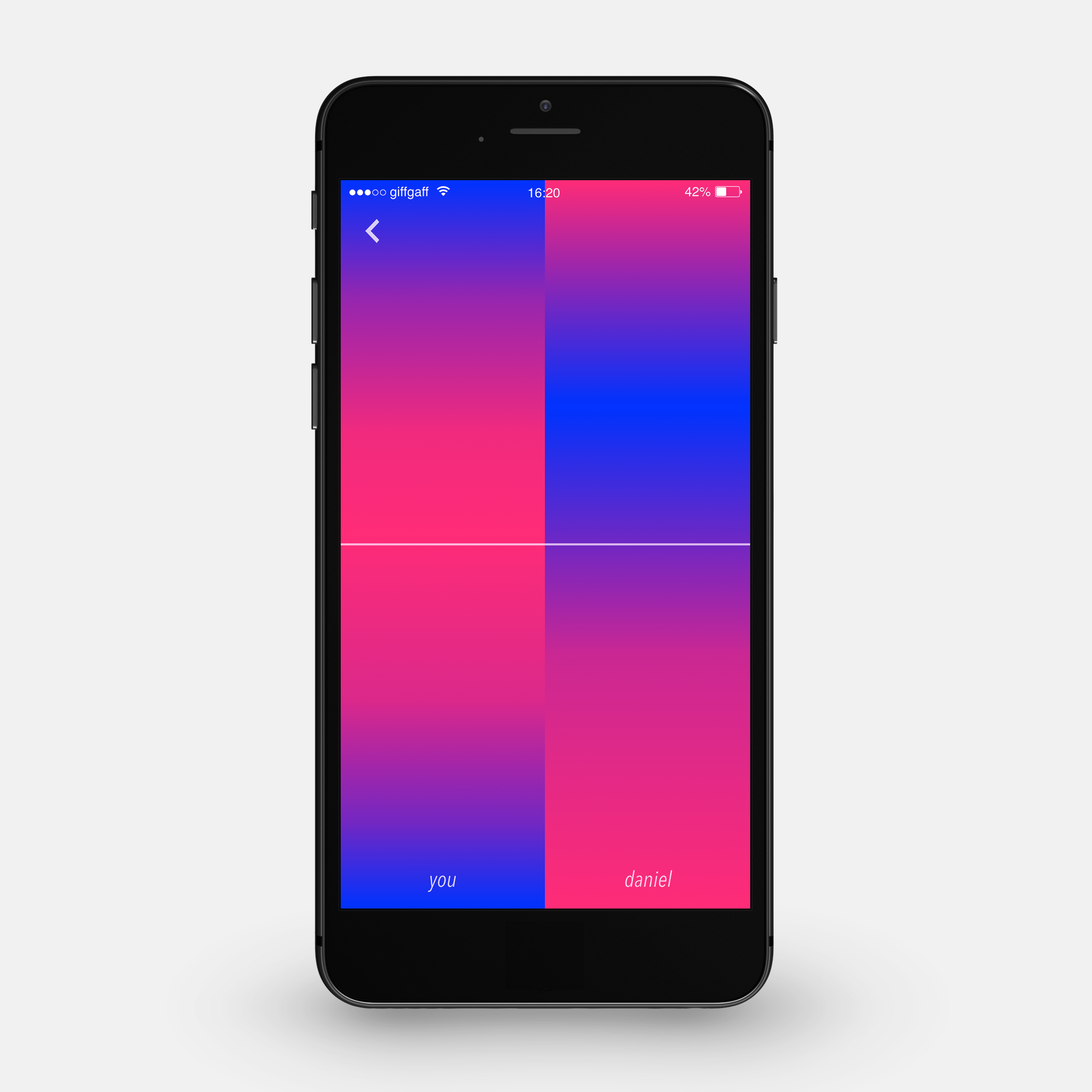


However, while we wait for a societally accepted and widespread form of Augmented Reality technology (hopefully without boxes on our faces), a solution for our current context is being developed as a smartphone application that uses the same intuitive scheduling interface as above, but uses the Google Calendar API to set real events and meetings. For more details on the app in development, see Sync.